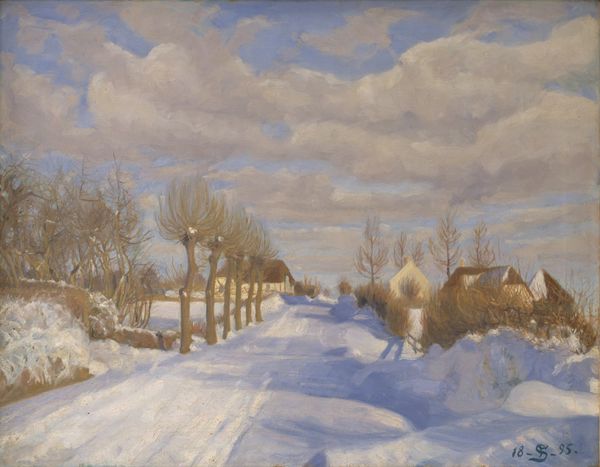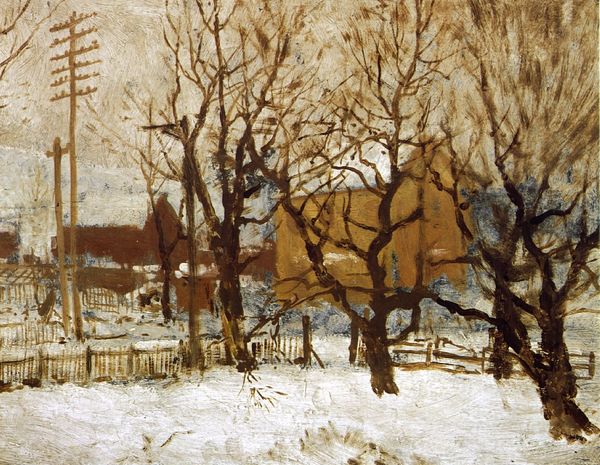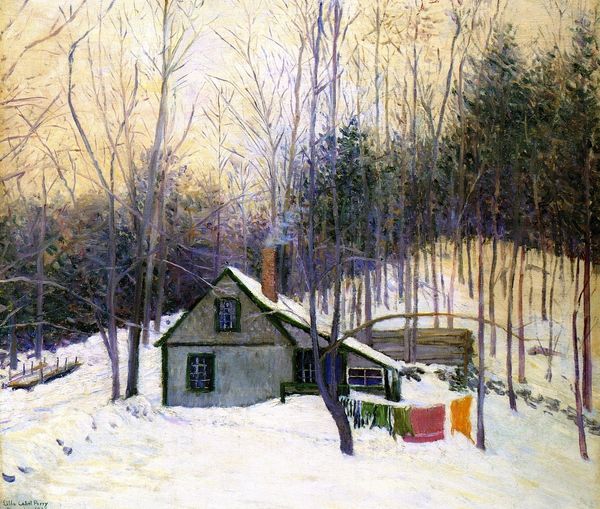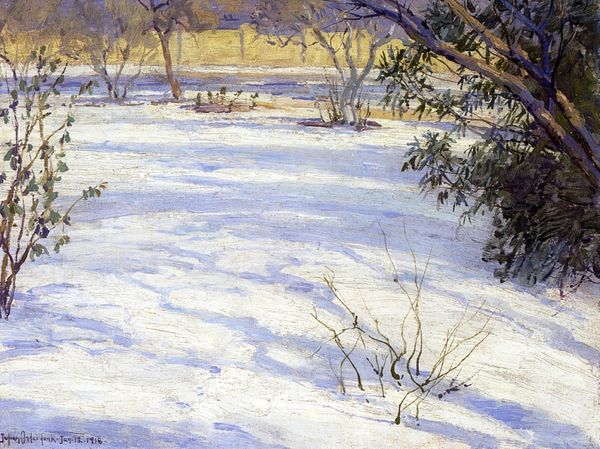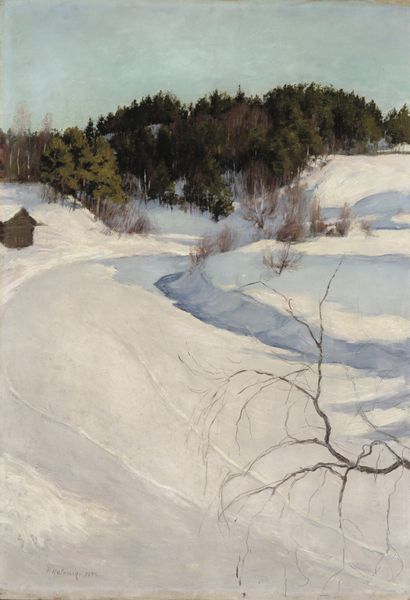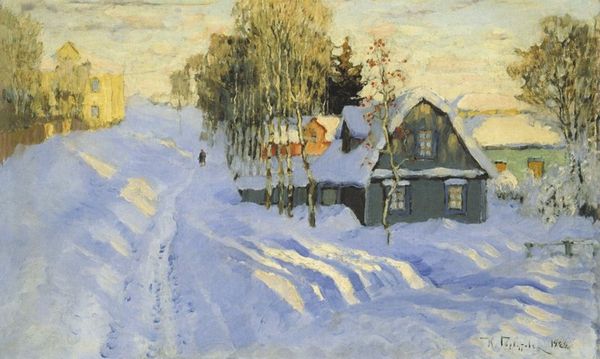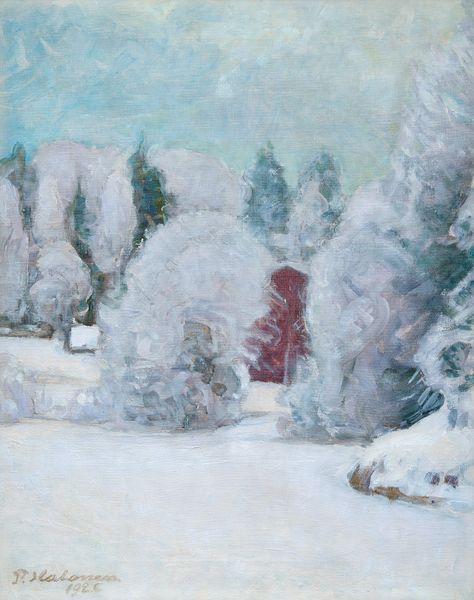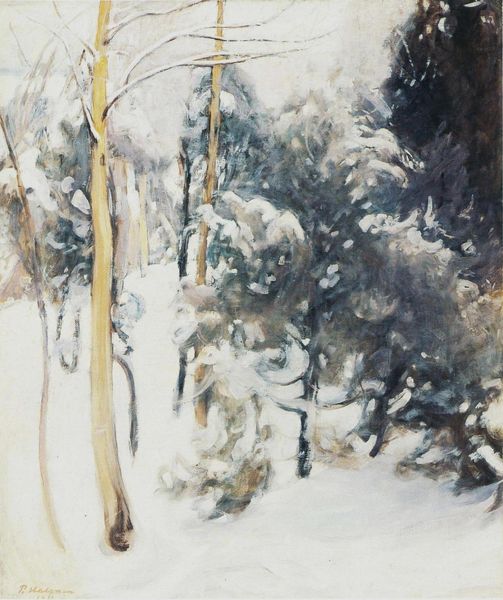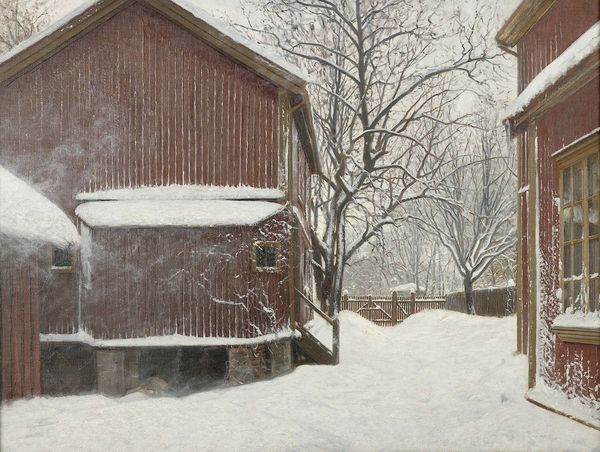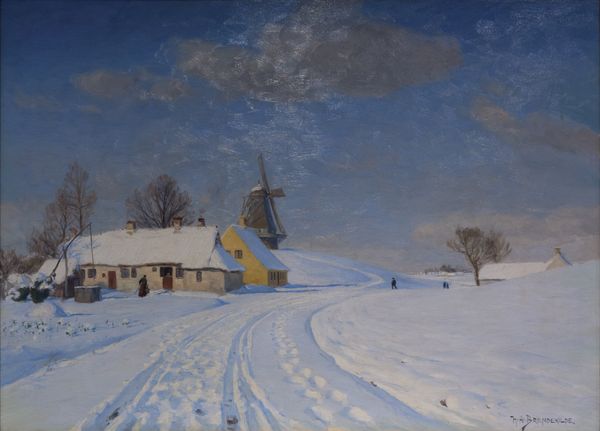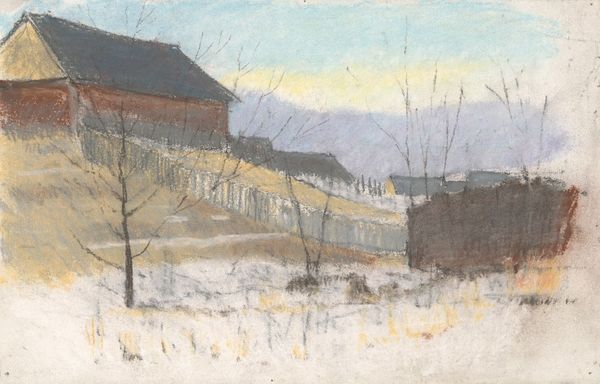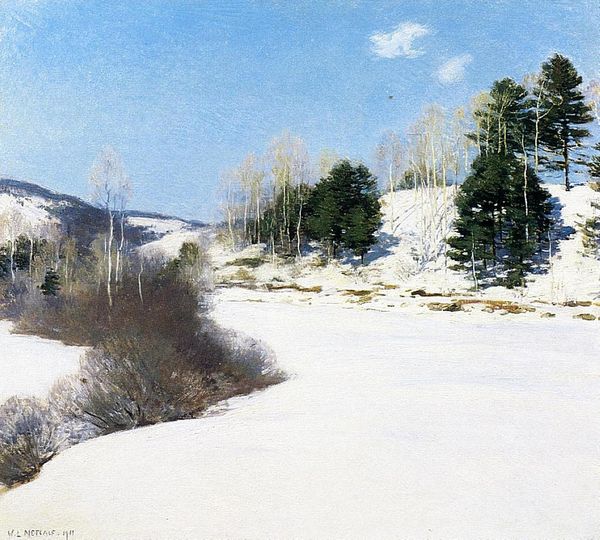
Dimensions: 60 x 75 cm
Copyright: Public domain
Editor: This is Isaac Levitan’s "March," painted in 1895. It's an oil painting of a winter landscape, with sunlight glinting off the snow. The scene feels so still and expectant, like everything is holding its breath for spring. How do you interpret this work? Curator: For me, "March" speaks to the socio-political climate of late 19th-century Russia. Levitan, as a Jewish artist, faced discrimination, which influenced his choice of landscapes devoid of human presence. Yet, this absence is telling. The solitary horse, the modest house – they evoke the harsh realities of rural life and a yearning for simpler times. Editor: That’s interesting. I hadn’t considered the social context affecting his landscape choices. Curator: Consider also the burgeoning realist movement. While impressionistic in its brushwork, the painting avoids idealization. The melting snow, the rough textures of the house – they offer an unvarnished glimpse into the everyday life of the peasantry. Does that shift your perspective at all? Editor: It does. It makes me think about the artist's intent to portray not just beauty, but also the lived experience of people. What about the bright sunlight? Does that contrast with the harsher elements? Curator: Absolutely. The light offers a glimmer of hope. Russia was on the cusp of revolution. Seeing the vibrant sun amidst the harsh snow makes me think about how art served as an emotional escape valve, and, more specifically, how paintings became the vehicle to highlight both the subtle beauty and grim realities of a changing Russia. Editor: I see that. Thanks, that gives me a richer appreciation for the painting's social relevance. Curator: Indeed, art becomes so much more when considered as an artefact that holds not only aesthetic appeal, but also a profound socio-historical story.
Comments
No comments
Be the first to comment and join the conversation on the ultimate creative platform.
